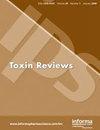Hydrogeochemical characterization, multi-exposure deterministic and probabilistic health hazard evaluation in groundwater in parts of Northern India
IF 2.4
4区 医学
Q2 TOXICOLOGY
引用次数: 6
Abstract
Abstract This work attempts to identify the latent factors controlling the hydrogeochemistry and assess the groundwater quality and associated health risks in the intermontane valley of Nalagarh in the sub-Himalayan zone in northern India. Analytical results of 64 groundwater samples, 32 each collected during pre monsoon and post monsoon seasons show contrasting results for their major chemical constituents. During pre monsoon period, only 3% of the samples exceed their permissible limits for pH, EC, TH and Mg2+, while during post monsoon period, different parameters, such as TH, Mg2+ and K+, exceed their limits by 9, 16, and 3%, respectively. Gibbs and Piper diagrams reveal that groundwater chemistry is mainly controlled by water-sediment (alluvial) interaction. Geochemical signatures and saturation index (SI) further indicate that the weathering and dissolution of silicate, calcite and dolomite minerals mainly contributed to dominance of Ca2+, Mg2+ and HCO3 - ions in the aquifers. Monte Carlo simulation ascertains non-carcinogenic health risks due to NO3 − and F− in different sub-population groups. Deterministic and probabilistic estimates of these parameters via ingestion and dermal routes confirm their percentage hazard toxicity in the order infants (58.38; 39.62%) >children (15.62; 15.85%) >teens (6.25; 2.73%) >adults (6.25; 1.90%) for pre monsoon. The hazard toxicity for deterministic study implies only on infants (9.38%), whereas, the probabilistic simulation extracted the health risk on infants (6.57%), and children (0.58%) during post monsoon. Minor populations with their lower body weights are more vulnerable to groundwater pollution due to greater consumption of liquid diet. Therefore, treated groundwater is strongly recommended to mitigate health morbidities linked with the non-cancerous risks.印度北部部分地区地下水的水文地球化学特征、多暴露确定性和概率性健康危害评估
摘要这项工作试图确定控制印度北部亚喜马拉雅带Nalagarh山间山谷水文地球化学的潜在因素,并评估地下水质量和相关的健康风险。对64个地下水样本的分析结果显示,其主要化学成分的结果截然不同,其中32个样本分别在季风前和季风后采集。在季风前期,只有3%的样本超过了pH、EC、TH和Mg2+的允许限值,而在季风后期,不同的参数,如TH、Mg2+和K+,分别超过了其限值9%、16%和3%。吉布斯图和派珀图揭示了地下水化学主要受水沙(冲积)相互作用的控制。地球化学特征和饱和度指数(SI)进一步表明,硅酸盐、方解石和白云石矿物的风化和溶解主要是Ca2+、Mg2+和HCO3-离子在含水层中占主导地位的原因。蒙特卡罗模拟确定了不同亚群体中NO3−和F−造成的非致癌健康风险。通过摄入和皮肤途径对这些参数的确定性和概率性估计证实了它们的危害毒性百分比,其顺序为婴儿(58.38;39.62%)>儿童(15.62;15.85%)>青少年(6.25;2.73%)>成人(6.25,1.90%)。确定性研究的危害毒性仅暗示婴儿(9.38%),而概率模拟提取了季风后婴儿(6.57%)和儿童(0.58%)的健康风险。体重较低的未成年人更容易受到地下水污染,因为他们摄入了更多的流质食物。所以,强烈建议使用经过处理的地下水来减轻和非癌症风险相关的健康疾病。
本文章由计算机程序翻译,如有差异,请以英文原文为准。
求助全文
约1分钟内获得全文
求助全文
来源期刊

Toxin Reviews
医学-毒理学
CiteScore
6.80
自引率
0.00%
发文量
36
审稿时长
>12 weeks
期刊介绍:
Toxin Reviews provides an international forum for publishing state-of-the-art reviews and guest-edited single topic special issues covering the multidisciplinary research in the area of toxins derived from animals, plants and microorganisms. Our aim is to publish reviews that are of broad interest and importance to the toxinology as well as other life science communities. Toxin Reviews aims to encourage scientists to highlight the contribution of toxins as research tools in deciphering molecular and cellular mechanisms, and as prototypes of therapeutic agents. Reviews should emphasize the role of toxins in enhancing our fundamental understanding of life sciences, protein chemistry, structural biology, pharmacology, clinical toxinology and evolution. Prominence will be given to reviews that propose new ideas or approaches and further the knowledge of toxinology.
 求助内容:
求助内容: 应助结果提醒方式:
应助结果提醒方式:


